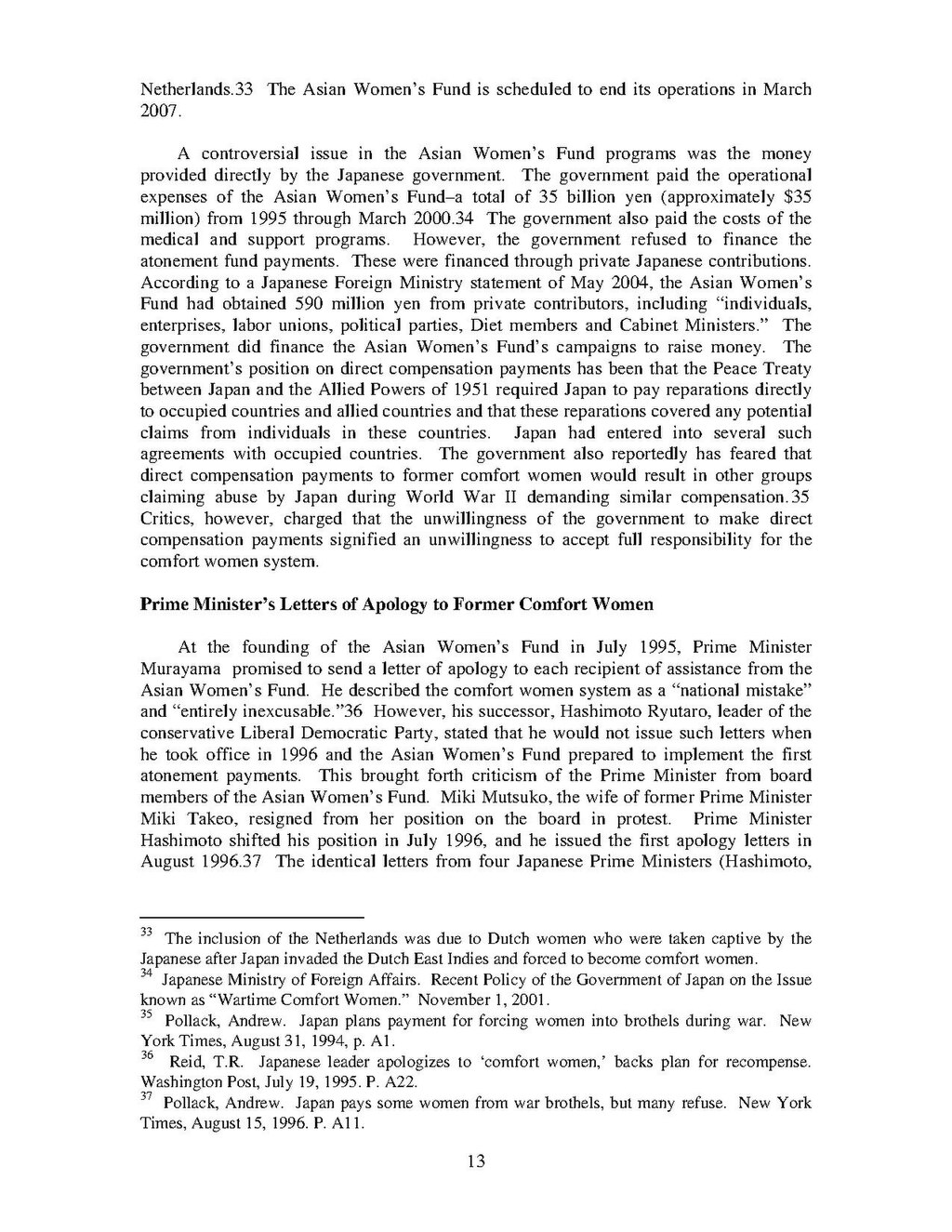Netherlands.[1] The Asian Women’s Fund is scheduled to end its operations in March 2007.
A controversial issue in the Asian Women’s Fund programs was the money provided directly by the Japanese government. The government paid the operational expenses of the Asian Women’s Fund—a total of 35 billion yen (approximately $35 million) from 1995 through March 2000.[2] The government also paid the costs of the medical and support programs. However, the government refused to finance the atonement fund payments. These were financed through private Japanese contributions. According to a Japanese Foreign Ministry statement of May 2004, the Asian Women’s Fund had obtained 590 million yen from private contributors, including “individuals, enterprises, labor unions, political parties, Diet members and Cabinet Ministers.” The government did finance the Asian Women’s Fund’s campaigns to raise money. The government’s position on direct compensation payments has been that the Peace Treaty between Japan and the Allied Powers of 1951 required Japan to pay reparations directly to occupied countries and allied countries and that these reparations covered any potential claims from individuals in these countries. Japan had entered into several such agreements with occupied countries. The government also reportedly has feared that direct compensation payments to former comfort women would result in other groups claiming abuse by Japan during World War II demanding similar compensation.[3] Critics, however, charged that the unwillingness of the government to make direct compensation payments signified an unwillingness to accept full responsibility for the comfort women system.
Prime Minister’s Letters of Apology to Former Comfort Women
At the founding of the Asian Women’s Fund in July 1995, Prime Minister Murayama promised to send a letter of apology to each recipient of assistance from the Asian Women’s Fund. He described the comfort women system as a “national mistake” and “entirely inexcusable.”[4] However, his successor, Hashimoto Ryutaro, leader of the conservative Liberal Democratic Party, stated that he would not issue such letters when he took office in 1996 and the Asian Women’s Fund prepared to implement the first atonement payments. This brought forth criticism of the Prime Minister from board members of the Asian Women’s Fund. Miki Mutsuko, the wife of former Prime Minister Miki Takeo, resigned from her position on the board in protest. Prime Minister Hashimoto shifted his position in July 1996, and he issued the first apology letters in August 1996.[5] The identical letters from four Japanese Prime Ministers (Hashimoto,
- ↑ The inclusion of the Netherlands was due to Dutch women who were taken captive by the Japanese after Japan invaded the Dutch East Indies and forced to become comfort women.
- ↑ Japanese Ministry of Foreign Affairs. Recent Policy of the Government of Japan on the Issue known as “Wartime Comfort Women.” November 1, 2001.
- ↑ Pollack, Andrew. Japan plans payment for forcing women into brothels during war. New York Times, August 31, 1994, p. A1.
- ↑ Reid, T.R. Japanese leader apologizes to ‘comfort women,’ backs plan for recompense. Washington Post, July 19, 1995. P. A22.
- ↑ Pollack, Andrew. Japan pays some women from war brothels, but many refuse. New York Times, August 15, 1996. P. A11.
13
